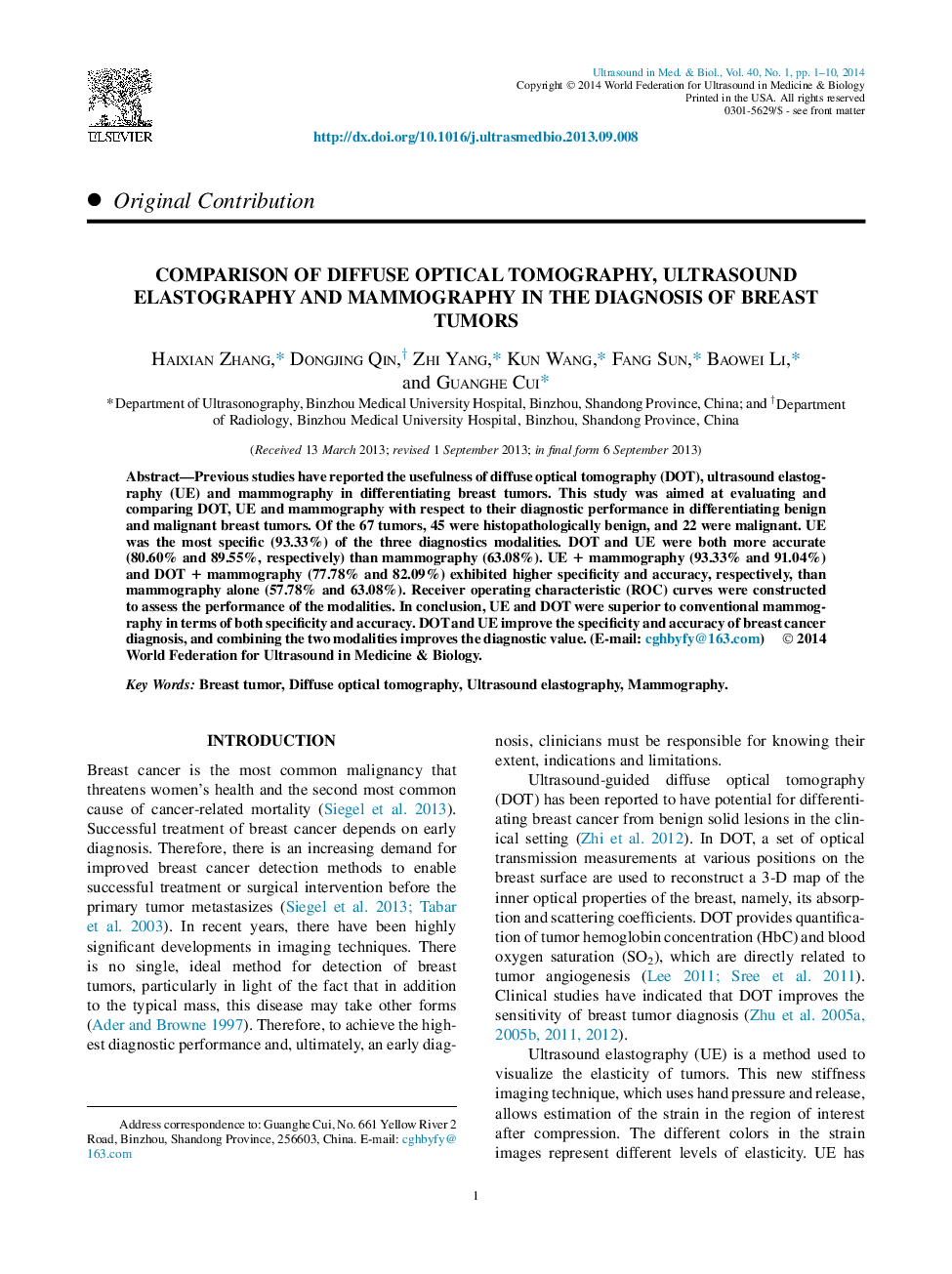| Article ID | Journal | Published Year | Pages | File Type |
|---|---|---|---|---|
| 1760656 | Ultrasound in Medicine & Biology | 2014 | 10 Pages |
Abstract
Previous studies have reported the usefulness of diffuse optical tomography (DOT), ultrasound elastography (UE) and mammography in differentiating breast tumors. This study was aimed at evaluating and comparing DOT, UE and mammography with respect to their diagnostic performance in differentiating benign and malignant breast tumors. Of the 67 tumors, 45 were histopathologically benign, and 22 were malignant. UE was the most specific (93.33%) of the three diagnostics modalities. DOT and UE were both more accurate (80.60% and 89.55%, respectively) than mammography (63.08%). UEÂ + mammography (93.33% and 91.04%) and DOTÂ + mammography (77.78% and 82.09%) exhibited higher specificity and accuracy, respectively, than mammography alone (57.78% and 63.08%). Receiver operating characteristic (ROC) curves were constructed to assess the performance of the modalities. In conclusion, UE and DOT were superior to conventional mammography in terms of both specificity and accuracy. DOT and UE improve the specificity and accuracy of breast cancer diagnosis, and combining the two modalities improves the diagnostic value.
Related Topics
Physical Sciences and Engineering
Physics and Astronomy
Acoustics and Ultrasonics
Authors
Haixian Zhang, Dongjing Qin, Zhi Yang, Kun Wang, Fang Sun, Baowei Li, Guanghe Cui,
